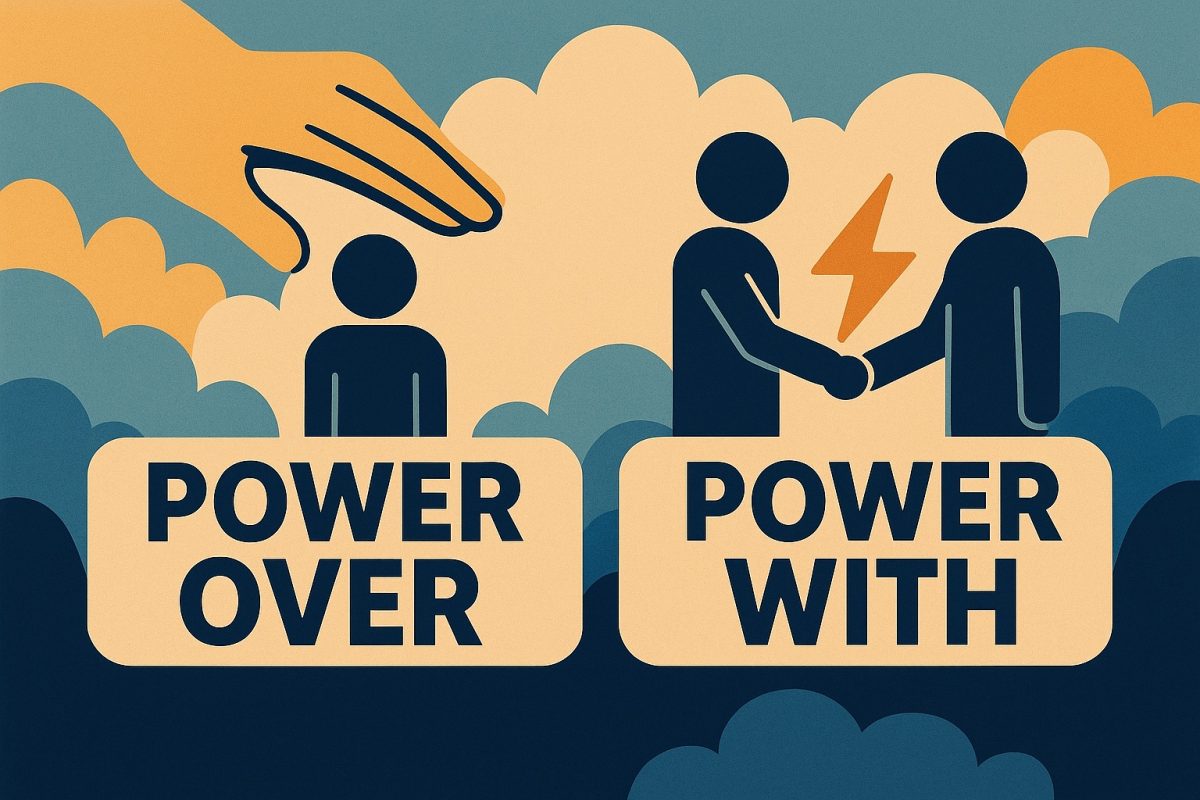Power Over vs. Power With: A Freedom-Oriented Take on Leadership and Influence
In a recent podcast episode of Diary of a CEO, Brené Brown discussed something that strikes at the heart of how we organise ourselves in free societies and companies alike — the difference between power over and power with. In her framing:
“Power over is driven by fear. Daring and transformative leaders share power with, empower people to, and inspire people to develop power within.”
For those of us who lean into a libertarian or freedom-centric outlook, this distinction is especially pertinent. It helps us to see how authority, organisation, and voluntary association can align with respect for individual agency, rather than undermining it.
What do we mean by Power Over and Power With?
- Power Over: This is the form of influence rooted in control, coercion, hierarchy, and fear. When you rule by decreeing, by forcing compliance, or by limiting choice, you’re exercising power-over. Brown emphasises that the danger of power lies not in the concept of power itself, but in how it is used.
- Power With: In contrast, this is collaborative, enabling, shared power. It arises when individuals or groups coordinate, support each other, share authority, and foster each other’s capacity. Brown says this is the kind of power that builds teams, organisations and societies where people feel alive, capable and free.
The libertarian lens values this distinction because it aligns with the idea that social cooperation should be voluntary, decentralised, and based on consent — not coercion.
Why Power Over is inherently fragile
From a freedom-perspective, power over is unstable for several reasons:
- Dependence on fear and compliance
When people are held in line by force or threat, you simultaneously breed resentment, resistance and hidden failure. Brown points out that power-over “is driven by fear.” - Concentration of authority invites corruption and failure
When a few hold all the power, the system becomes brittle. Oversight collapses. Mistakes are hidden. The ability to adapt is weakened. - It undermines agency and innovation
If individuals are always subject to command, they stop thinking, stop owning their work, stop experimenting. From a market or entrepreneurial standpoint, that is a recipe for stagnation.
Thus, power over not only conflicts with the ideal of individual autonomy, but it also weakens the systems (businesses, economies, communities) that depend on free actors making choices.
Why Power With aligns with free-market, free-society thinking
When we shift to “power with”, we see dynamics that mirror healthy markets and voluntary institutions:
- Distributed decision-making: Just as in a functioning market many actors make many decisions rather than a central planner, power with encourages many individuals to share in decisions rather than one commander.
- Mutual benefit and voluntary participation: Power-with is not about forcing people; it is about enabling people to contribute, to choose, to exchange.
- Resilience and adaptability: Just as free markets adapt faster because knowledge is dispersed and decisions made locally, organisations exercising power-with can respond more nimbly because actors are empowered.
- Ethical alignment: Libertarian thought emphasises that freedom means not simply being free from controls, but being free for something — for experimentation, for responsibility, for creative contribution. Power-with fosters that sense of purpose.
In short: power with is not only morally preferable in a freedom-oriented worldview, but it is pragmatically superior in environments where innovation, cooperation and human dignity matter.
Applying the concept in business and society
Let’s explore how this idea can be put into practice in organisations, markets and public life.
Business & entrepreneurship
- Replace top-down mandates (“do exactly this”) with frameworks that articulate goals (“here is what we need to achieve”) and give teams latitude in the how.
- Empower employees to propose, decide and act. If you hire smart people, trust them. This mirrors the liberty ideal of individual agency.
- Use incentives not as sticks but as aligned interests: when individuals feel they own the outcomes and the process, they invest more deeply.
- Make governance transparent and accountable: power with requires that actors know the rules and share in shaping them.
Markets & regulation
- Markets thrive when power is diffused rather than concentrated: monopolies, regulatory capture and privileged elites are manifestations of power-over.
- A regulatory regime that asks “how can we enable more actors to participate safely?” rather than “how do we control all actors?” embodies power-with.
- Free markets are not chaos: they flourish with predictable rules, property rights, contract enforcement — but those rules should enable, not subsume, voluntary exchange.
Civil society & public institutions
- Public institutions oriented around service rather than control better reflect the power-with mindset.
- Civic organisations, communities of practice, networks of mutual support: these are voluntary and share power, they don’t impose it.
- Even when governments exist (from a libertarian realism), their legitimacy depends on limiting power over (protecting rights) and promoting power with (enabling citizens).
A caution: power with is not laissez-faire anarchy
It’s important to clarify that power-with is not the same as “no structure or rule.” A free society still needs frameworks: laws, property rights, enforcement. The difference is:
- The purpose of the frameworks is to enable freedom and cooperation, not to control or centralise it.
- The governance approach favours subsidiarity, decentralisation, minimal coercion and maximum individual choice.
- Leaders view their role as stewards or facilitators, not overlords.
Brown writes:
“What makes power dangerous is how it’s used.”
For libertarian thought, that means we never treat power as neutral — every structure that grants power requires scrutiny, transparency and the possibility to share or withdraw it.
Concluding reflections
From the freedom-oriented perspective, the distinction between power over and power with is deeply meaningful. It’s not just about leadership style; it’s about the underlying philosophy of how we organise ourselves—whether in companies, societies or economic systems.
When power is used over others, we create dependency, fragility and oppression. When power is shared with others, we create agency, resilience and dignity.
In the words of Brown, courageous leaders don’t protect their power—they distribute it. That insight aligns with the libertarian belief that liberty is not only a moral value but an organising principle. Empowered individuals cooperating by choice—rather than coerced individuals obeying orders—are the cornerstone of healthy, dynamic, free human systems.
In your organisation, your market, your community: ask yourself — Am I wielding power over or am I cultivating power with? Because the future of freedom, innovation and cooperation may depend on how you answer that question.
Sources
- Brené Brown — Power and Leadership (her website) : https://brenebrown.com/resources/brene-brown-on-power-and-leadership/?utm_source=borderstride.com
- Brené Brown — Values and Power (PDF): https://brenebrown.com/wp-content/uploads/2020/10/Values-and-Power_WebsiteDownload.pdf?utm_source=borderstride.com
- “Power Over vs. Power Within” (Guiding Leaders & Teams blog) : https://guidingleadersandteams.com/power-over-vs-power-within/?utm_source=borderstride.com
- “Exploring the 4 Types of Power in Leadership” (Stop At Nothing blog) : https://www.stopatnothing.com/4-types-of-power/?utm_source=borderstride.com
- Diary of a CEO with Brené Brown — https://youtu.be/jroF3PH-PTs?si=1cs1dVlc641zAmh1






